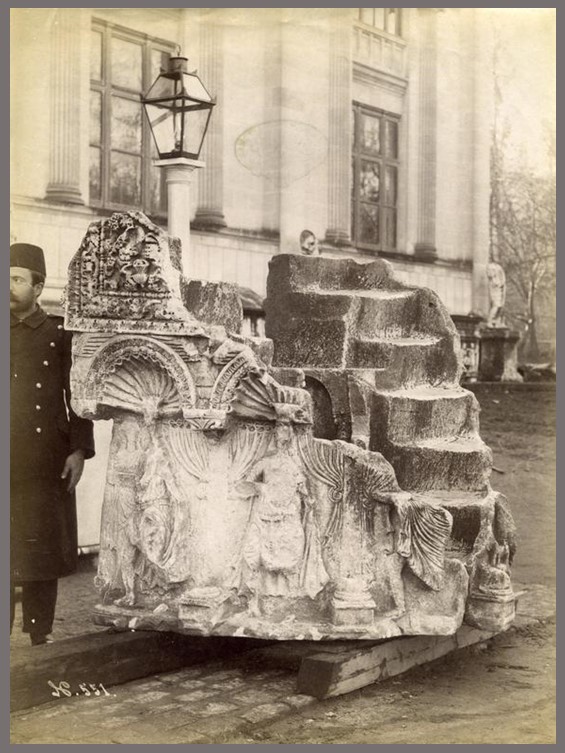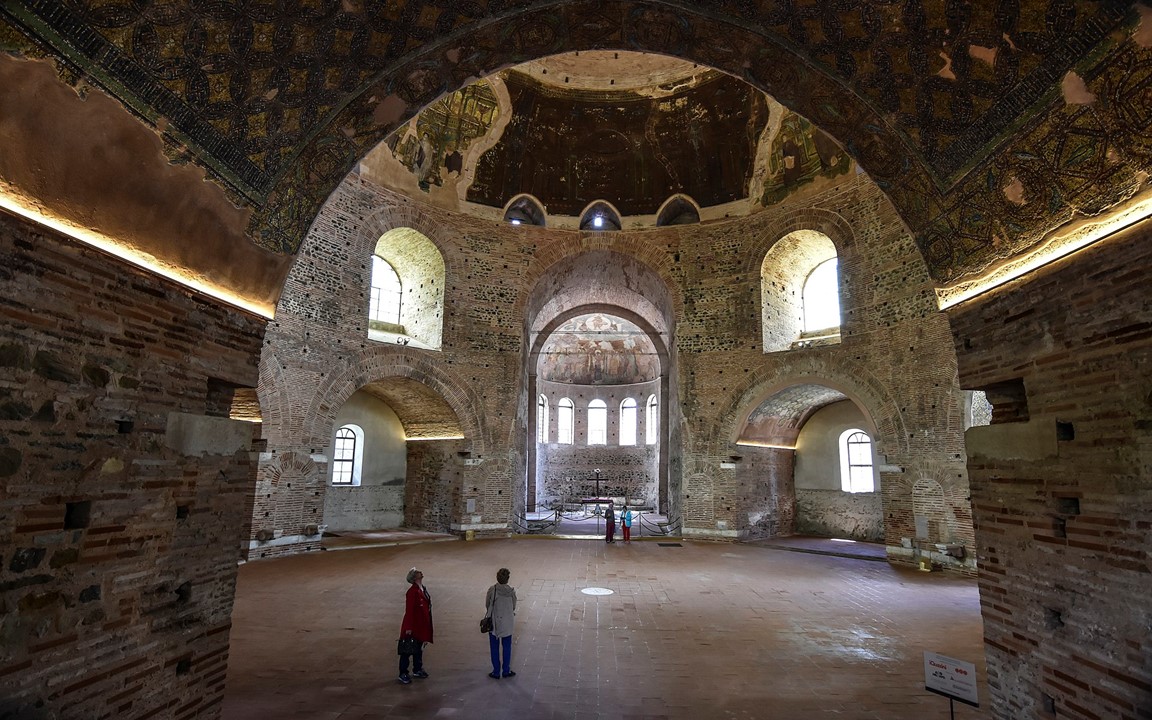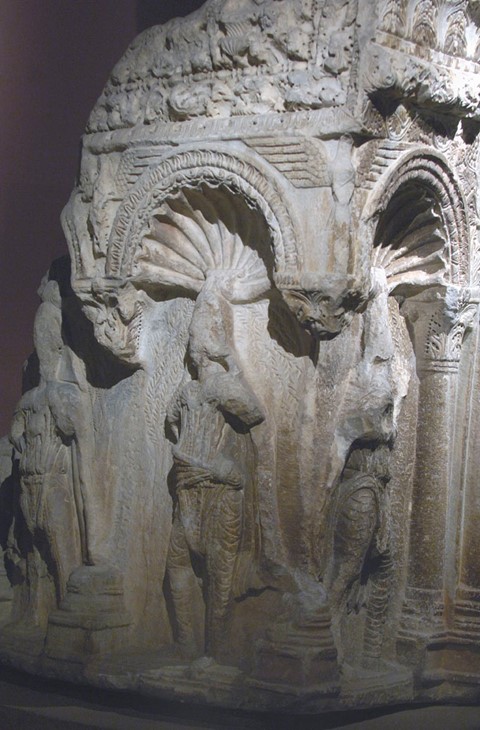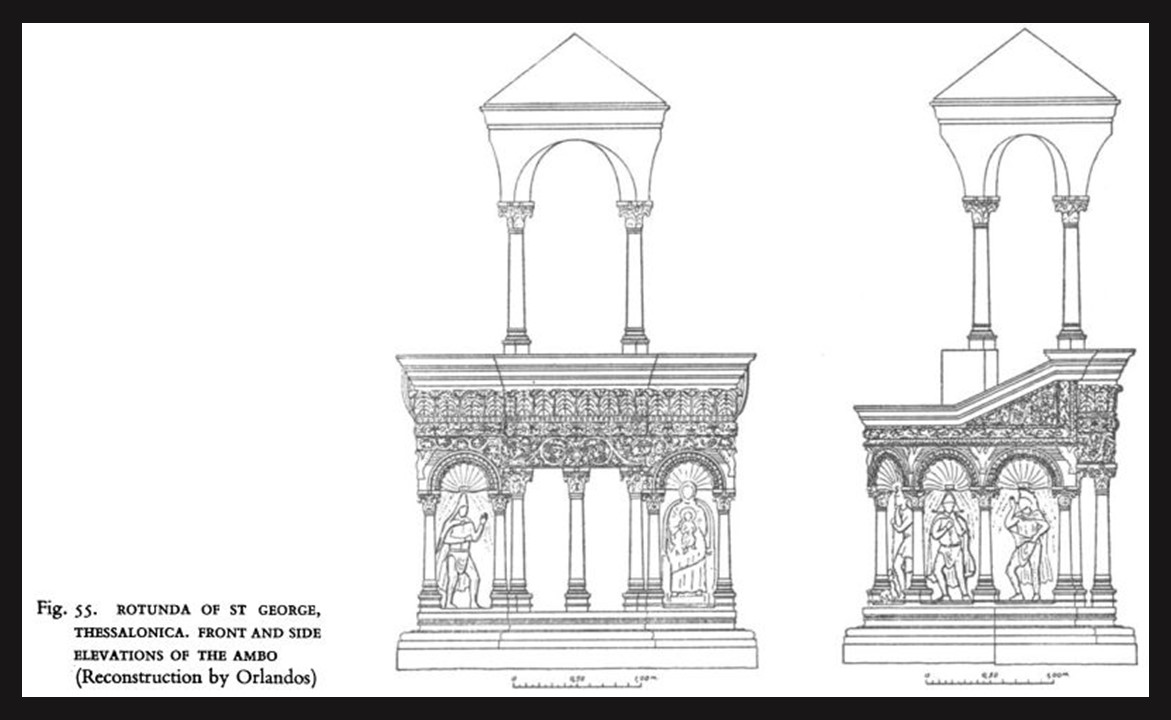
Photo Credit: OMNIA http://www.omnia.ie/index.php?navigation_function=3&europeana_query=Arch%C3%A4ologisches+Museum&europeana_cursor=%2A&europeana_prev_cursor=%2A&dpla_nav_start=0&prev_obcnt=-807
“The world is a book and those who do not travel read only one page.” St. Augustine once said and the Rotunda Ambo, where many books were read, in front of many “travellers,” came to my mind.
As a ‘traveller,’ interested in Byzantine Art, the Rotunda Ambo is a ‘page in my book’ I like to read about again and again. I imagine… a 6th-century pilgrim entering the great Rotunda of Thessaloniki for Vespers… uplifted and overwhelmed by its size and domed inner space, awe-struck by its shimmering mosaics, stirred by the opulence of the service, the ‘logos’ and the chanting, moved by the sculptural decoration on the walls of its impressive Ambo…

As a young student reading and ‘travelling’ through the pages of Ralph F. Hoddinott’s book of 1963, Early Byzantine churches in Macedonia and southern Serbia – A Study of the Origins and the Initial Development of East Christian Art, I was intrigued to enrich my ‘world book’ with stories and pictures and memories. Many more ‘travels’ later, many more written pages, I take out Hoddinott’s book to read and further explore one specific monument of great importance, the Rotunda Ambo of Thessaloniki! http://macedonia.kroraina.com/en/rheb/index.htm

Photo copyright: Dick Osseman
https://pbase.com/dosseman/image/58466693
According to the Encyclopedia Britannica, an “Ambo…”, is “a raised stand formerly used for reading the Gospel or the Epistle, first used in early basilicas. Originally, the ambo took the form of a portable lectern. By the 6th century, it had evolved into a stationary church furnishing, which reflected the development and codification of the Christian liturgy…” We know that the position of each Ambo in an Early Christian Church, centrally placed or on the sides of the nave, varied consisting of “…raised platforms on three levels reached by steps and protected by railings. Each level was consecrated to a special part of the service.” https://www.britannica.com/topic/ambo-church-architecture
The Rotunda Ambo, the only Early Christian sculptural piece to have survived, in fragments and quite battered, still impressive and beautiful, is now exhibited in the Museum of Antiquities in Istanbul while its marble base survives in Thessaloniki. Dates suggested for the Rotunda Ambo vary, starting as early as the late 4th century. Most scholars, however, believe that the carving of the ornamental decoration of the ambo should date to the early 6th century.

According to Hoddinott… “Below bands of delicately worked acanthus and vine motives, the ambo, in its original state, presented the Adoration of the Magi. Each figure is set individually beneath scalloped niches and between Corinthian columns, the three Magi are shown on one side of the ambo searching for the Christ Child, and on the other bringing Him their gifts. The Virgin, enthroned upon a round backed chair, holds the Child upon her knees. An angel introduces the Magi. Another figure, the upper part of which has been lost, represents a shepherd with his sheep around him and the skin of an animal over his shoulders. Eagles, or other large birds, their wings outstretched, occupy the spandrils between the scalloped niches.”
An interesting article for further reading…, by Nino Zchomelidse The Epiphany of the logos in the Ambo in the Rotunda (Hagios Georgios) in Thessaloniki
For a PowerPoint on the Rotunda Ambo and a Collection of old photos, please… Click HERE!